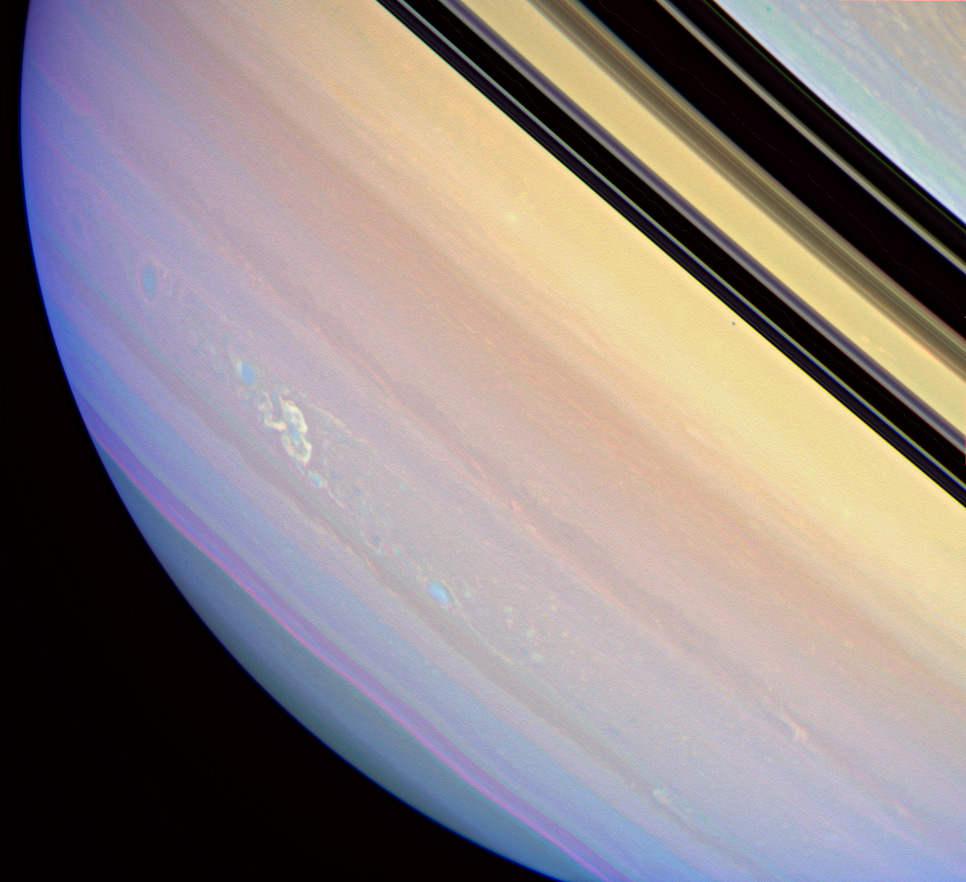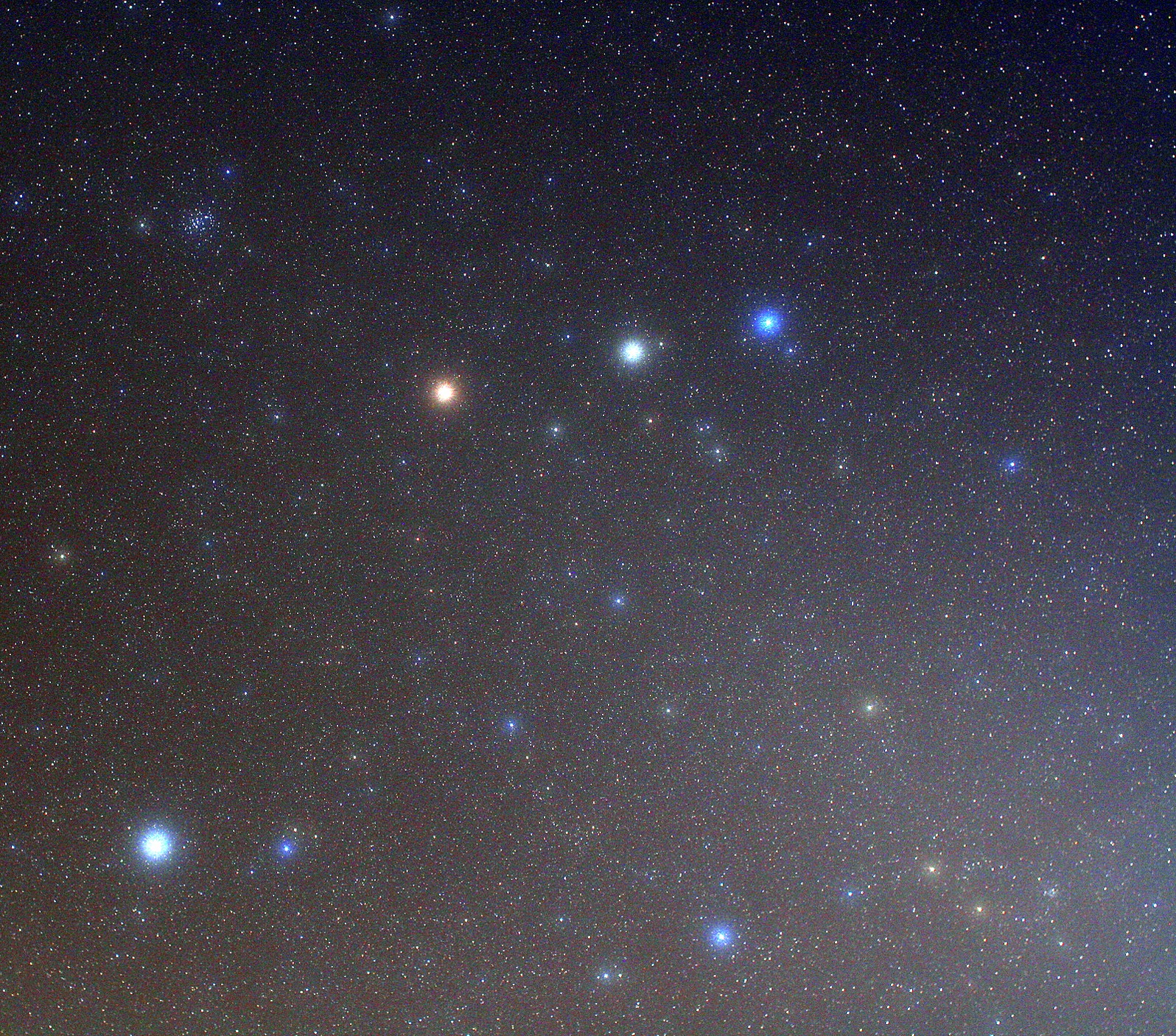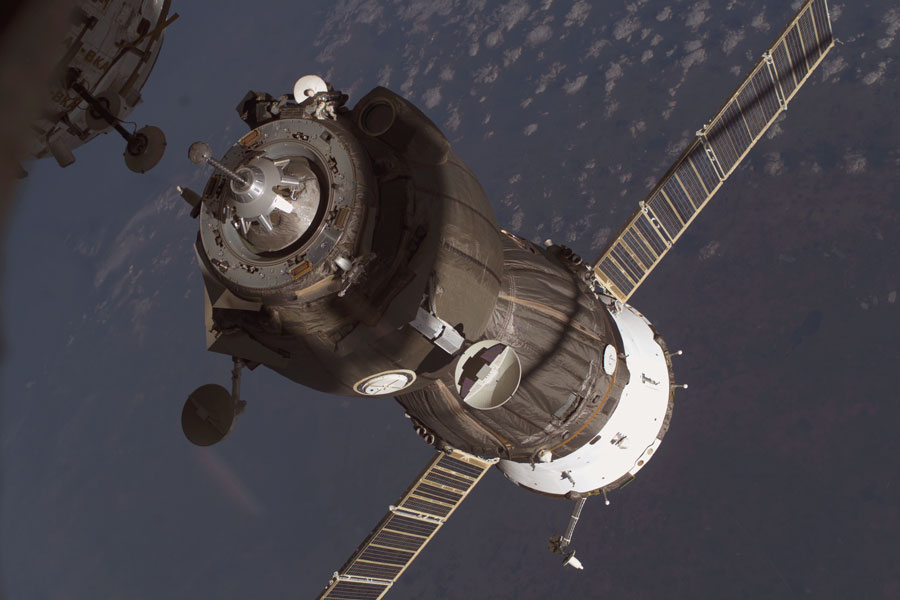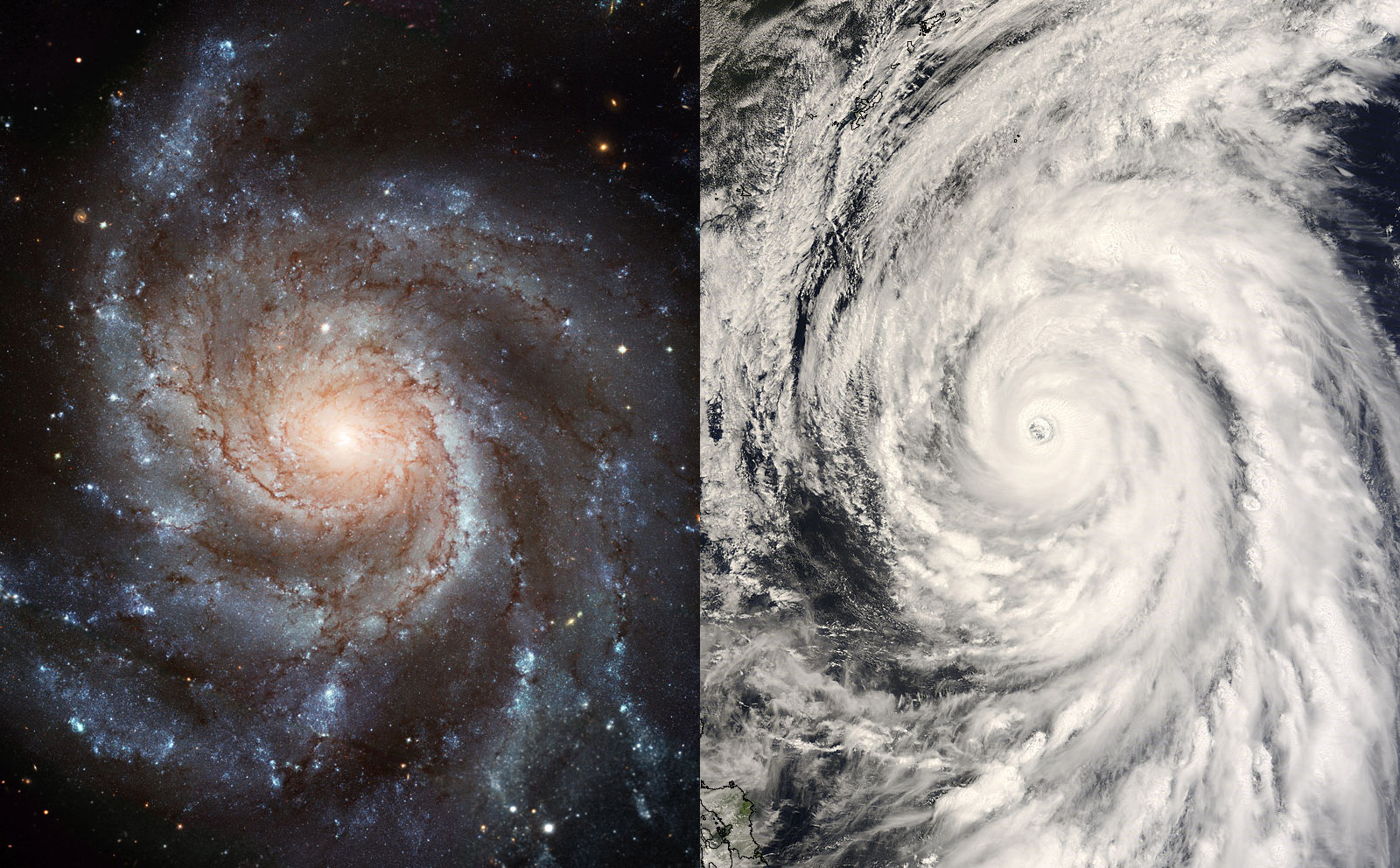|
|
Post by Jack on May 2, 2008 19:47:35 GMT
Source: NASA Shaping NGC 6188
Credit & Copyright: John Ebersole Explanation: Dark shapes with bright edges winging their way through dusty NGC 6188 are tens of light-years long. The emission nebula is found near the edge of an otherwise dark large molecular cloud in the southern constellation Ara, about 4,000 light-years away. Formed in that region only a few million years ago, the massive young stars of the embedded Ara OB1 association sculpt the fantastic shapes and power the nebular glow with stellar winds and intense ultraviolet radiation. The recent star formation itself was likely triggered by winds and supernova explosions, from previous generations of massive stars, that swept up and compressed the molecular gas. A false-color Hubble palette was used to create the this gorgeous wide-field image and shows emission from sulfur, hydrogen, and oxygen atoms in red, green, and blue hues. At the estimated distance of NGC 6188, the picture spans about 300 light-years.
|
|
|
|
Post by Jack on May 3, 2008 13:18:53 GMT
Source: NASA Alborz Mountain Miky Way Alborz Mountain Miky Way
Credit & Copyright: Babak Tafreshi (TWAN)
Explanation: Snow-capped stratovolcano Mt. Damavand climbs to 5,670 meters (18,598 feet) near the left edge in this panoramic view of the world at night. Pan to the right and your gaze will sweep across the arch of our Milky Way Galaxy above the Alborz Mountain Range bordering the Caspian Sea. Near the center of the panorama, recorded in the predawn hours of April 4th, bright stars Deneb and Altair lie close to the curve of the Milky Way, above the glow of the Haraz valley. Farther right, brilliant Jupiter dominates the sky near the stars, nebulae, and dark dust clouds toward the bulging galactic center. Finally, the horizon glow at the right edge, below bright yellowish giant star Antares, is from the city of Damavand, named for the legendary mountain peak.
|
|
|
|
Post by Jack on May 4, 2008 17:37:14 GMT
Source: NASA An Antarctic Total Solar Eclipse An Antarctic Total Solar Eclipse
Credit and Copyright: Fred Bruenjes (moonglow.net)
Explanation: The Sun, the Moon, Antarctica, and two photographers all lined up in 2003 Antarctica during an unusual total eclipse of the Sun. Even given the extreme location, a group of enthusiastic eclipse chasers ventured near the bottom of the world to experience the surreal momentary disappearance of the Sun behind the Moon. One of the treasures collected was the above picture -- a composite of four separate images digitally combined to realistically simulate how the adaptive human eye saw the eclipse. As the image was taken, both the Moon and the Sun peaked together over an Antarctic ridge. In the sudden darkness, the magnificent corona of the Sun became visible around the Moon. Quite by accident, another photographer was caught in one of the images checking his video camera. Visible to his left are an equipment bag and a collapsible chair.
|
|
|
|
Post by Jack on May 5, 2008 16:07:43 GMT
Source: NASA A Persistent Electrical Storm on Saturn A Persistent Electrical Storm on Saturn
Credit: Cassini Imaging Team, SSI, JPL, ESA, NASAExplanation: How do large storms evolve on Saturn? On Earth, a hurricane can persist for weeks, while the Great Red Spot on Jupiter has been in existence for over 150 years. On Saturn, a storm system has now set a new endurance record, now being discernable for greater than three months. Electrical signals were detected from the storm in late November of 2007, while the above image was taken in early March 2008. The storm has roughly the width of planet Earth. Planetary scientists hypothesize that the storm runs deep into Saturn's cloud tops. The above image is shown in exaggerated colors combining violet and green light with light normally too red for humans to see. Visible on the upper right are shadows of Saturn's expansive ring system. Careful inspection will reveal Saturn's small moon Janus just below a ring shadow. Understanding weather on other planets helps atmospheric scientists better understand our Earth's weather. Observers of our Solar System's huge ringed world will be tracking the storm to see how it evolves and how long it will ultimately last.
|
|
|
|
Post by Steve Gardner on May 7, 2008 11:28:56 GMT
Source: NASAGalaxies Collide in NGC 3256
Credit: NASA, ESA, Hubble Heritage (STScI / AURA) - ESA/Hubble Collaboration, & A. Evans (UVa, NRAO, SUNYSB) Explanation: Galaxies don't normally look like this. NGC 3256 actually shows a current picture of two galaxies that are slowly colliding. Quite possibly, in hundreds of millions of years, only one galaxy will remain. Today, however, NGC 3256 shows intricate filaments of dark dust, unusual tidal tails of stars, and a peculiar center that contains two distinct nuclei. Although it is likely that no stars in the two galaxies will directly collide, the gas, dust, and ambient magnetic fields do interact directly. NGC 3256, part of the vast Hydra-Centaurus supercluster of galaxies, spans over 100 thousand light-years across and is located about 100 million light-years away. |
|
|
|
Post by Steve Gardner on May 7, 2008 11:30:46 GMT
Source: NASAThe Gegenschein Over Chile
Credit & Copyright: Yuri Beletsky (ESO) Explanation: Is the night sky darkest in the direction opposite the Sun? No. In fact, a rarely discernable faint glow known as the gegenschein (German for "counter glow") can be seen 180 degrees around from the Sun in an extremely dark sky. The gegenschein is sunlight back-scattered off small interplanetary dust particles. These dust particles are millimeter sized splinters from asteroids and orbit in the ecliptic plane of the planets. Pictured above from last October is one of the most spectacular pictures of the gegenschein yet taken. Here a deep exposure of an extremely dark sky over Paranal Observatory in Chile shows the gegenschein so clearly that even a surrounding glow is visible. In the foreground are several of the European Southern Observatory's Very Large Telescopes, while notable background objects include the Andromeda galaxy toward the lower left and the Pleiades star cluster just above the horizon. The gegenschein is distinguished from zodiacal light near the Sun by the high angle of reflection. During the day, a phenomenon similar to the gegenschein called the glory can be seen in reflecting air or clouds opposite the Sun from an airplane. |
|
|
|
Post by Steve Gardner on May 10, 2008 16:33:04 GMT
Source: NASAThe Dark Tower in Scorpius
Credit & Copyright: Robert Gendler Explanation: In silhouette against a crowded star field toward the constellation Scorpius, this dusty cosmic cloud evokes for some the image of an ominous dark tower. In fact, clumps of dust and molecular gas collapsing to form stars may well lurk within the dark nebula, a structure that spans almost 40 light-years across the gorgeous telescopic view. Known as a cometary globule, the swept-back cloud, extending from the upper right to the head (top of the tower) left and below center, is shaped by intense ultraviolet radiation from the OB association of very hot stars in NGC 6231, off the left edge of the scene. That energetic ultraviolet light also powers the globule's bordering reddish glow of hydrogen gas. Hot stars embedded in the dust can be seen as small bluish reflection nebulae. This dark tower, NGC 6231, and associated nebulae are about 5,000 light-years away. |
|
|
|
Post by Steve Gardner on May 10, 2008 16:35:10 GMT
Source: NASAMoon Meets Mercury
Credit & Copyright: P-M Hedén (Clear Skies, TWAN) Explanation: On Tuesday, May 6, while standing on planet Earth and sweeping your binoculars along the western horizon just after sunset, you might have encountered this arresting skyscape. The view features a slender crescent Moon and bright planet Mercury separated on the sky by only about 2 degrees. Cradled in the sunlit lunar crescent, the night side of the Moon is faintly illuminated by earthshine -- sunlight reflected from planet Earth. Of course, the clouds in silhouette and fading twilight colors are common elements in pictures of the sky after sunset, but much less often seen is inner planet Mercury, usually hiding close to the Sun in Earth's sky. Still, the coming week will be a good time to spot Mercury near the western horizon about 30 minutes after sunset. As for the Moon, tonight and tomorrow night the crescent Moon will wander close to Mars in the early evening sky. |
|
|
|
Post by Steve Gardner on May 10, 2008 16:42:06 GMT
Source: NASA Stars and Mars
Credit & Copyright: Doug Zubenel (TWAN) Explanation: Wandering through the evening sky, on May 4th planet Mars stood in line with Castor and Pollux, the two bright stars of the constellation Gemini. In this time exposure of the celestial alignment, Mars actually takes on a distinct yellowish hue, contrasting in color with Pollux; a giant star known to have a Jupiter-class planet, and Castor; itself a multiple star system. Though in mythology Pollux and Castor are twin brothers, the two stars are physically unrelated and are about 34 and 50 light-years distant respectively. Included in the skyview are Procyon, alpha star of Canis Minor, and famous star cluster M44 also known as the Beehive Cluster. Dust in our own solar system reflecting sunlight creates the faint band of Zodiacal light emerging from the lower right corner of the frame. Just put your cursor over the picture for help with identifications. Of course, bright Mars can still be found in the western evening skies and tonight wanders near the crescent Moon. |
|
|
|
Post by Steve Gardner on May 11, 2008 5:23:59 GMT
Source: NASARetrograde Mars
Credit & Copyright: Tunç Tezel (TWAN) Explanation: Why would Mars appear to move backwards? Most of the time, the apparent motion of Mars in Earth's sky is in one direction, slow but steady in front of the far distant stars. About every two years, however, the Earth passes Mars as they orbit around the Sun. During the most recent such pass over the last year, the proximity of Mars made the red planet appear larger and brighter than usual. Also during this time, Mars appeared to move backwards in the sky, a phenomenon called retrograde motion. Pictured above is a series of images digitally stacked so that all of the stars images coincide. Here, Mars appears to trace out a loop in the sky. Near the top of the loop, Earth passed Mars and the retrograde motion was the highest. Retrograde motion can also be seen for other Solar System planets. Edited by Jack - You typed in the Source name wrong. |
|
|
|
Post by Jack on May 12, 2008 16:02:56 GMT
Source: NASA The M81 Galaxy Group Through the Integrated Flux Nebula The M81 Galaxy Group Through the Integrated Flux Nebula
Credit & Copyright: Jordi Gallego
Explanation: Large galaxies and faint nebula highlight this deep image of the M81 Group of galaxies. First and foremost in the above wide-angle 12-hour exposure is the grand design spiral galaxy M81, the largest galaxy visible in the image. M81 is gravitationally interacting with M82 just below it, a big galaxy with an unusual halo of filamentary red-glowing gas. Around the image many other galaxies from the M81 Group of galaxies can be seen. Together with other galaxy congregates including our Local Group of galaxies and the Virgo Cluster of galaxies, the M81 Group is part of the expansive Virgo Supercluster of Galaxies. This whole galaxy menagerie is seen through the faint nebular glow of the Integrated Flux Nebula, a little studied complex of diffuse gas and dust clouds in our Milky Way Galaxy.
|
|
|
|
Post by Jack on May 14, 2008 16:21:42 GMT
Source: NASA A Supply Ship Docks with the International Space Station A Supply Ship Docks with the International Space Station
Credit: ISS Expedition 16 Crew, NASA Explanation: Looking out a window of the International Space Station brings breathtaking views. Visible vistas include a vast and colorful Earth, a deep dark sky, and an occasional spaceship sent to visit the station. Visible early last month was a Soyuz TMA-12 spacecraft carrying not only supplies but also three newcomers. The three new astronauts were Expedition 17 commander Sergei Volkov, flight engineer Oleg Kononenko, and spaceflight participant So-yeon Yi. Yi returned to Earth a few days later, while Volkov and Konenenko are scheduled to return in a few months. The docking module pictured above involved the Pirs Docking Compartment. The Expedition 17 crew, including NASA flight engineer Gregory Chamitoff, will carry out repairs on the ISS, explore new methods of living in space, and conduct research in space including the effects of space radiation on vitamin molecules.
|
|
|
|
Post by Jack on May 16, 2008 17:05:59 GMT
Source: NASA Circles in the Sky Circles in the Sky
Credit & Copyright: Jean-Marc Lecleire
Explanation: Gazing skyward on a sunny day in May, photographer Jean-Marc Lecleire captured this engaging display of ice halos forming complete circles in the sky. Recorded with a fish-eye lens from a spot near the grand Château de Chambord in France, the picture looks straight up, spanning almost 180 degrees from horizon to horizon. Surrounding the Sun is a halo formed by sunlight refracting through hexagonal-shaped ice crystals in high, thin clouds. The halo is circular and exactly 22 degrees in radius, but it looks squashed because of the distortion of the extremely wide-angle lens. Surrounding the zenith (the point directly above the observer) and always at the same altitude as the Sun is a lovely parhelic circle, caused by sunlight reflecting from ice crystals with nearly vertical faces. On average more common than rainbows, beautiful ice halos can often be seen in planet Earth's sky by those who know how to look for them.
|
|
|
|
Post by Jack on May 17, 2008 18:55:08 GMT
Source: NASA Logarithmic Spirals Logarithmic Spirals
Image Credit: M101 - NASA, ESA, CFHT, NOAO; Typhoon Rammasun - MODIS, NASA
Comparison: Lawrence Anderson-Huang (Ritter Astrophysical Obs., Univ. Toledo) Explanation: Uncomfortably close Typhoon Rammasun (right) and 25 million light-year distant galaxy M101 don't seem to have much in common. For starters, Rammasun was only a thousand kilometers or so across while M101 (aka the Pinwheel Galaxy) spans about 170,000 light-years, making them vastly dissimilar in scale, not to mention the different physical environments that control their formation and development. But they do look amazingly alike: each with arms exhibiting the shape of a simple and beautiful mathematical curve known as a logarithmic spiral, a spiral whose separation grows in a geometric way with increasing distance from the center. Also known as the equiangular spiral, growth spiral, and Bernoulli's spiral or spira mirabilis, this curve's rich properties have fascinated mathematicians since its discovery by 17th century philosopher Descartes. Intriguingly, this abstract shape is much more abundant in nature than suggested by the striking visual comparison above. For example, logarithmic spirals can also describe the tracks of subatomic particles in a bubble chamber, the arrangement of sunflower seeds and, of course, cauliflower.
|
|
|
|
Post by Steve Gardner on May 21, 2008 12:08:13 GMT
Source: NASAOn the Origin of Gold
Illustration Credit : Dana Berry, NASA Explanation: Where did the gold in your jewelry originate? No one is completely sure. The relative average abundance in our Solar System appears higher than can be made in the early universe, in stars, and even in typical supernova explosions. Some astronomers have recently suggested that neutron-rich heavy elements such as gold might be most easily made in rare neutron-rich explosions such as the collision of neutron stars. Pictured above is an artist's illustration depicting two neutron stars spiraling in toward each other, just before they collide. Since neutron star collisions are also suggested as the origin of short duration gamma-ray bursts, it is possible that you already own a souvenir from one of the most powerful explosions in the universe. |
|